- Home
- James Patterson
14th Deadly Sin Page 2
14th Deadly Sin Read online
Page 2
My partner, Inspector Rich Conklin, was standing behind me to my right, and Chief of Police Warren Jacobi loomed impatiently over my left shoulder.
Jacobi had caught a couple of bullets in his leg and hip a few years ago and the injuries had aged him. He was fifty pounds overweight, his joints crackled and popped when he walked, and the pain had drained the fun from his salty sense of humor.
He grumbled, “Wait till you see this,” and handed me a disc; then he sighed loudly as we waited for my “lazy-ass computer” to boot up.
I slid the disc into the drawer. The drive whirred, and then a video, time-dated 3:06 this morning, appeared on my screen. The camera had been positioned under flickering streetlights in a nearly deserted block in the notoriously sketchy Tenderloin. The footage was grainy, shot with a cheap surveillance cam of the type used more as a prop than as a tool for actually identifying people.
“That’s Ellis Street,” said Jacobi. “And that’s what I call crud,” he added, stabbing a sausagelike finger at three figures entering the frame. The men wore black billed caps and navy-blue Windbreakers with white letters reading SFPD across the back. They also held automatic handguns as they headed smartly toward an all-night check-cashing store with a yellow sign above the window reading Payday Loans. Checks Cashed.
I straightened in my seat, then turned to shoot a look at Jacobi.
What the hell is this?
“Balls on these bastards,” he said. “Boxer. It’s hard to make out. Can’t you focus that picture?”
“What you see is what you get,” I said.
For long, gritty seconds, we watched the cops advance along the dark commercial street lined with low, blocky buildings. Then they converged on the lit-up storefront and went through the door in single file.
A moment later, the lights inside the store went out. The door burst open and one of the “cops” ran out with a satchel under one arm, followed by the other two men, who were carrying similar bags.
Now that they were heading toward the camera, I looked for facial features, something that could be run through facial-recognition software.
But the faces were all the same.
Then I got it. The bad guys were wearing latex masks that completely disguised their features. Seconds after leaving the store, the men in the SFPD Windbreakers had run out of camera range.
Jacobi said, “Christ. Someone please tell me that these men are anything but cops.”
CHAPTER 4
I FELT SICKENED at what I had just seen on the footage. Like Jacobi, I hoped we were looking at holdup guys with a bad sense of humor, not actual police officers pulling off an armed robbery.
I asked Jacobi, “Were there any fatalities?”
“One,” he said. “The owner wouldn’t give up the combination to the safe until he was shot to pieces. He managed a few words with the EMTs before he bled out on the floor. He said cops did it. The kid who worked for him was interviewed on scene. He said there had been about sixty grand in the floor safe.”
Conklin whistled.
Jacobi went on, “This is the second one like this. A few days ago, three men in SFPD caps and Windbreakers robbed a Spanish market. A mercado. No one died, but it was another big score. It goes without saying, these guys have to be stopped or every man and woman in uniform is going to take shit for this whether we deserve it or not.”
Conklin and I nodded, and Jacobi kept going.
“Robbery squad is already working the case, but I told Brady I want the two of you to work with them now that we’ve got a homicide.
“Boxer. You know Philip Pikelny, who heads up Robbery? Call him. You and Conklin work with his guys. This is the most important case in the house.”
“We’ve got it, Chief.”
Muttering to himself, Jacobi stumped out of the bullpen.
About now, Robbery would be canvassing Ellis Street and Forensics would be taking apart a check-cashing shop called Payday Loans. Checks Cashed. All we could hope for was a snitch or that this professional crew had left evidence behind.
I called Phil Pikelny and repeated Jacobi’s instructions. The sergeant told me what he knew about the case so far.
“The scene is still off-limits,” Phil said. “CSU has barred the doors until they’re done, which could be later today.”
Phil told me he would get us the footage of the first “Windbreaker heist,” the armed robbery of a mercado.
“It’s with the DA’s Office, but I’ll put in a request to get a copy to you ASAP.”
I called Administration and asked for time sheets for every cop at every rank in the Southern Station, thinking maybe we could at least make a list of cops who were off duty when those heists went down.
And for me, question number one was: Were these robbers really cops? Or just crooks in cops’ clothing? Either way, wearing police Windbreakers probably gave the robbers a few seconds’ grace before the victims knew they were being hit.
My good-doin’ partner made a breakfast burrito run and I put up a fresh pot of coffee in the break room. Then we settled into our facing desks, ready for a roll-up-your-sleeves desktop investigation.
CHAPTER 5
HOURS AFTER TALKING with Phil Pikelny, Conklin and I were still waiting for the DA’s Office to send over the video of the Windbreaker cops’ first known heist. I checked my watch. I could still make it. I told my partner I’d be back in a couple of hours.
“I have a date and I can’t be late.”
Richie opened his desk drawer, pulled out a slim, brightly wrapped package with a bow and a gift card, and handed it to me.
“This is for Claire. Try to bring me back some cake.” He grinned winningly. He’s a handsome guy who has somehow avoided becoming vain.
I took the gift, as well as the one I’d stashed inside my top drawer, then got my car out of the lot across the street. Two twisted streets and ten minutes later, I parked my ancient Explorer at the curb in front of the Bay Club. I put my ID on the dash. Then I walked around the corner to Marlowe, a fabulous eatery housed in a brick building with wine and food quotes etched on the large-paned casement windows.
I peered through the glass and saw Yuki and Claire in the back at a table for four. They seemed intensely involved in conversation, and from the looks on their faces, they were taking opposite sides. I came through the door into the bright, industrial-style interior, and Yuki spotted me right away. It almost looked like she was hoping for rescue.
She called out over the loud conversation that was bouncing off the tile and steel surfaces: “Lindsay, over here.”
I headed toward my pals, and Claire stood up for my hug. She looked gorgeous, wearing black pants, a V-neck sweater, and a diamond pendant shaped like a butterfly around her neck. Claire is usually trying to lose a few pounds, but she always looks perfect to me.
I said, “Love you, Butterfly. Happy birthday, girlfriend.”
She laughed. “Love you, too, Linds.”
She hugged me back, and I swung into a chair across from her and next to Yuki. Small-boned Yuki was impeccably dressed in a blue suit, her sleek hair falling to her creamy silk collar. A string of pale angel skin coral beads at her throat. When I’d last seen Yuki a week ago, she’d looked a little happier than she did now.
“You OK?” I asked.
“I’m good,” she said.
We embraced, and I had just hung my jacket over the back of my chair when Cindy sailed up to the table, glowing like a rose at sunrise.
There was more hugging and kissing all around, Cindy adding a gift to the growing pile of sparkly paper and ribbons in the center of the table. We high-fived each other and I signaled to the waiter.
I was hungry for the specialty of the house: a hamburger made with Niman Ranch beef, topped with caramelized onions, bacon, cheese, and horseradish aioli, nestled between halves of a hot, buttered bun. With fries. And even more than that upcoming delight, I was very glad to be with my best friends.
It was Cindy who had named our
little group the Women’s Murder Club. It was kind of a joke, and at the same time entirely for real, because the four of us certainly surrounded the subject of murder: me in Homicide; Claire, San Francisco’s medical examiner; Yuki, a rising star in the DA’s Office; and Cindy Thomas, a top-tier crime reporter at the San Francisco Chronicle.
Cindy was a new author, too. Her nonfiction book, Fish’s Girl: A True Story of Love and Serial Murder, was grounded in a case Conklin and I had worked and two killers we had both known very well. Cindy had followed up the case and helped bring one of those killers down.
Her book was coming out at the end of the week. I was pretty sure that was why she was glowing.
After we’d ordered drinks, Claire piped up. “Yuki’s quitting her job.”
Cindy and I both said, “No way!” at the same time.
“I’m thinking about it,” Yuki said, “just thinking about it. It’s, like, an idea, you know? Geesh, you guys.”
Cindy jumped in with what I was imagining.
“Oh. My. God. I know what’s going on with you. You’re pregnant.”
Yuki was married to my boss, the tough but fair Lieutenant Jackson Brady—but they’d only been married for four months. I didn’t have a chance to get my mind around the idea of Yuki and Brady having a child, because Yuki was answering Cindy in her typical rapid-fire style.
“No, no, no, I’m not pregnant, but if you don’t mind, all of you, we have to order lunch now, because I absolutely have to be in a deposition in an hour.”
And that was when my phone rang.
I looked at the caller ID while everyone stared bullets at me. We had one rule for our no-holds-barred get-togethers.
No phone calls.
“Sorry,” I said. “I’ve got to take this.”
And I did.
CHAPTER 6
I LEFT THE girls and found a niche where I could take the call in private.
“What’s wrong?” I said to Lieutenant Brady.
“A dead body at Twenty-Fourth and Balmy Alley,” he said. “I need you and Conklin to do a preliminary workup. Lock down the scene and sit tight until replacements arrive. Jacobi wants you and Conklin on the check-cashing heist, nothing else.”
I rejoined my friends.
I said, “Sorry, guys. That was the boss. I’ve got to go.”
Yuki tossed her napkin a few inches into the air in exasperation.
Cindy said, “What can you tell me?”
You can take the reporter out of the Chronicle, but you can’t take the reporter out of Cindy.
“Nothing,” I said. “I can’t tell you even one little thing.”
“How many times do I have to prove I’m trustworthy?” said Cindy. “Plus, you owe me.”
Actually, Cindy was right. On both counts. I trusted her. And a few months ago, she’d saved my life.
“I still can’t tell you anything. Not a word.”
I grabbed for my jacket and had just about secured it when Claire said, “I cannot believe this is happening again.”
The expression on her face stopped me. She was pissed. Highly.
“What’s happening again?” I asked her.
“This is almost exactly what happened last year on my birthday,” said Claire. “And the year before that.”
“Are you sure?”
“I’m damned sure. Although as I recall, last year we actually ate most of our lunch before you bolted from the table. Check your memory, Lindsay. When was the last time you saw me blow out the candles?”
“I’m sorry. I can’t get out of this. I’ll make it up to you, Claire. To everyone. Including myself. That’s an iron-clad promise.”
I apologized some more, blew kisses, and fled the restaurant. I called Rich Conklin from the street, and while I walked to my car, I said, “I’m ten minutes away.”
“Same here.”
The engine started right up. I peeled out and pointed the Explorer toward a busy intersection in the Mission.
CHAPTER 7
BALMY ALLEY AND Twenty-Fourth looked like a freeway pileup.
I counted three hastily parked cruisers, and another one was coming in behind me. Both streets were cordoned off, causing traffic to back up in the one open lane on Twenty-Fourth. Pedestrians had gathered three deep at the barrier tape with cell phones in hand, evidently having nothing better to do than gawp at a bleeding corpse in the crosswalk.
I parked on the sidewalk, got my point-and-shoot Nikon out of the console, and found Conklin, who was talking to a young cop. He introduced me to Officer Martin Einhorn, a rookie who’d been writing up a parking ticket when the incident occurred.
Einhorn’s black eyes flashed back and forth between Conklin and me as he walked us through the scene. He was sweating through his uniform and his speech was high-pitched and staccato. Very likely he’d never seen a body before, and now he’d been this close to an actual murder as it happened.
He said, “I was putting a ticket on that red Mazda over there. The victim was crossing the street. There were a lot of people crossing at the same time, both ways. Tourists mostly,” he said, pointing his chin in the general direction of the sightseer magnet: vividly colored murals protesting human rights abuses over the last fifty years.
“I didn’t see the attack,” said the rookie. “I heard the screaming, and when everyone scattered, I saw … her.” He took a moment to get himself together before continuing.
“I called it in and the EMTs got here like a minute later. They said the victim was dead and I told them to leave her body in place. That this is a crime scene.”
“Exactly right,” I said.
Einhorn nodded, then said a squad car had arrived after a few minutes and the officers had strung tape. “We got as many names as we could, but people were trying to get out of here and we didn’t have enough manpower to detain them. Those two witnesses hung in. Mr. and Mrs. Nathan Gosselin, right over there. Mrs. Gosselin saw the attack.”
While Conklin approached the couple standing outside a smoke shop, I took a wide-angle view of the crime scene and got a fix on where the victim lay in relation to cars, buildings, and people. Then I ducked under the tape and identified myself to the officers who were protecting the body and the scene.
One of the cops said, “Right this way, Sergeant. Mind the blood.”
“Got it,” I said.
I gloved up, then moved closer so that I could get a good look at the victim.
CHAPTER 8
IT WAS A terrible sight.
The dead woman was lying on her side. She was white, had shoulder-length brown hair, and looked to be in her late forties or early fifties.
She had cared about her appearance, and wore expensive clothing: an unbuttoned tan raincoat over blood-soaked beige knit separates. The source of the blood looked to be a long slice through her clothes from her lower abdomen up to her rib cage that had likely required strength, determination, and a long, sharp blade.
The victim had bled out fast. She might never have known what had happened to her.
I trained my camera on the conspicuous wound. Then I shot close-ups of the victim’s hands—no wedding band—and of her face, and of her stockinged feet, which lay like beached fish where she’d fallen out of her shoes.
An authentic and pricey large Louis Vuitton handbag lay beside her. I opened the bag and photographed the contents: a pair of good running shoes, a makeup kit, a Jimmy Choo sunglass case, a paperback novel, and a brown leather wallet, new and of good quality.
When I opened her wallet, I learned that the victim’s name was Tina Strichler. Her driver’s license listed her age as fifty-two, and her home address was about six blocks from the scene of her death. Strichler had a full deck of credit cards, and business cards identifying her as a psychiatrist. She also had receipts for recent purchases and two hundred twenty-two dollars in cash.
I typed Strichler’s name into my phone, using an app that linked up to SFPD databases—and got nothing back. Which didn’t surprise m
e. So far, I had nothing to explain why this woman of means had not been robbed. She’d been gutted in broad daylight on a busy street where cell phone cameras were pointing in every direction.
I circled the body and took photos of the crowd on the sidewalks on the chance that whoever had killed this woman was watching the activity at the crime scene.
Conklin came toward me and summarized the witness statements, using his hands to point out the direction the victim had been coming from.
“The Gosselins were crossing Balmy Alley toward the victim,” he said. “Mrs. Gosselin didn’t notice the killer until he struck or punched out at the victim’s midsection. All she saw was a medium-size white guy in a black jacket or coat or shirt with the tails out. She thinks he had brown hair.”
Conklin looked exasperated, and I felt the same way. So many pairs of eyes, and one of the only two witnesses had seen practically nothing.
My partner went on.
“After the attack, the doer kept going and disappeared into the crowd. Mr. Gosselin saw none of this. He went to his wife when she started screaming. The rest was chaos. A stampede.”
An unmarked car pulled up and two guys from our squad got out: Fred Michaels and Alex Wang, both new hires by Brady.
Conklin and I greeted them and brought them up to date on the details of the crime as we knew it. I told them I’d send them a typed version of my notes and the photos as soon as I got back to the Hall. And then, as sorry as I was to do it, I turned the case over to the new guys.
Conklin and I had our own horrible murder waiting for us at our desks. We got back into our separate cars and were headed back to the Hall when, as I turned onto Bryant Street, something came to me. It was a realization that just about reached out and hit me like a slap across the face.
Claire had been right.
There had been murders on each of her birthdays for the previous two years. And I was almost positive that those cases hadn’t been solved.

 Miracle at Augusta
Miracle at Augusta The Store
The Store The Midnight Club
The Midnight Club The Witnesses
The Witnesses The 9th Judgment
The 9th Judgment Against Medical Advice
Against Medical Advice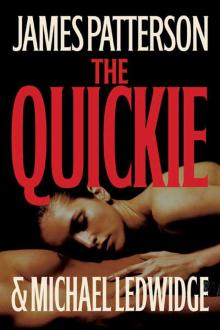 The Quickie
The Quickie Little Black Dress
Little Black Dress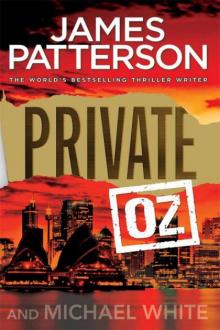 Private Oz
Private Oz Homeroom Diaries
Homeroom Diaries Gone
Gone Lifeguard
Lifeguard Kill Me if You Can
Kill Me if You Can Bullseye
Bullseye Confessions of a Murder Suspect
Confessions of a Murder Suspect Black Friday
Black Friday Manhunt
Manhunt Filthy Rich
Filthy Rich Step on a Crack
Step on a Crack Private
Private Private India
Private India Game Over
Game Over Private Sydney
Private Sydney The Murder House
The Murder House Mistress
Mistress I, Michael Bennett
I, Michael Bennett The Gift
The Gift The Postcard Killers
The Postcard Killers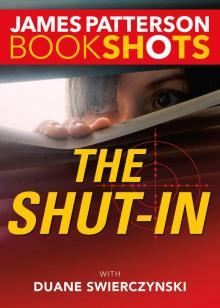 The Shut-In
The Shut-In The House Husband
The House Husband The Lost
The Lost I, Alex Cross
I, Alex Cross Going Bush
Going Bush 16th Seduction
16th Seduction The Jester
The Jester Along Came a Spider
Along Came a Spider The Lake House
The Lake House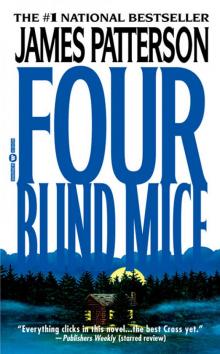 Four Blind Mice
Four Blind Mice Tick Tock
Tick Tock Private L.A.
Private L.A. Middle School, the Worst Years of My Life
Middle School, the Worst Years of My Life Cross Country
Cross Country The Final Warning
The Final Warning Word of Mouse
Word of Mouse Come and Get Us
Come and Get Us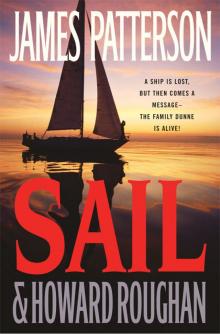 Sail
Sail I Funny TV: A Middle School Story
I Funny TV: A Middle School Story Private London
Private London Save Rafe!
Save Rafe! Swimsuit
Swimsuit Sam's Letters to Jennifer
Sam's Letters to Jennifer 3rd Degree
3rd Degree Double Cross
Double Cross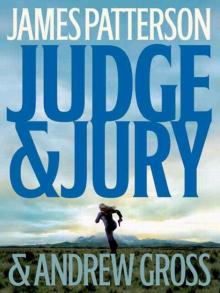 Judge & Jury
Judge & Jury Kiss the Girls
Kiss the Girls Second Honeymoon
Second Honeymoon Guilty Wives
Guilty Wives 1st to Die
1st to Die NYPD Red 4
NYPD Red 4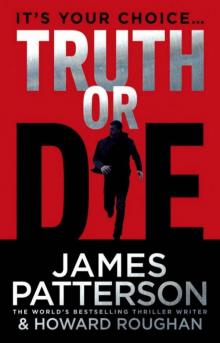 Truth or Die
Truth or Die Private Vegas
Private Vegas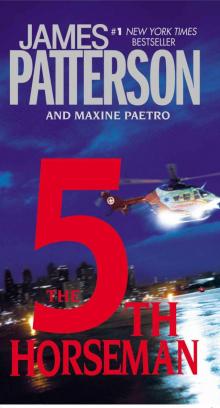 The 5th Horseman
The 5th Horseman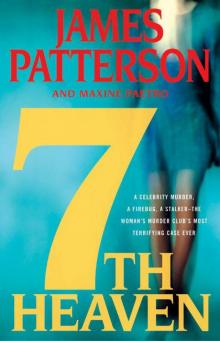 7th Heaven
7th Heaven I Even Funnier
I Even Funnier Cross My Heart
Cross My Heart Let’s Play Make-Believe
Let’s Play Make-Believe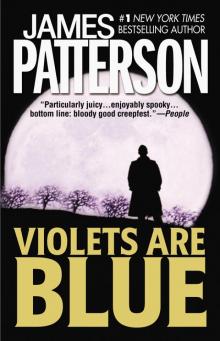 Violets Are Blue
Violets Are Blue Zoo
Zoo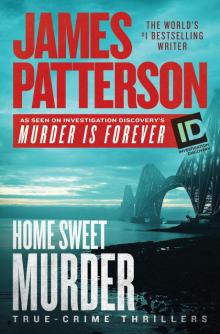 Home Sweet Murder
Home Sweet Murder The Private School Murders
The Private School Murders Alex Cross, Run
Alex Cross, Run Hunted: BookShots
Hunted: BookShots The Fire
The Fire Chase
Chase 14th Deadly Sin
14th Deadly Sin Bloody Valentine
Bloody Valentine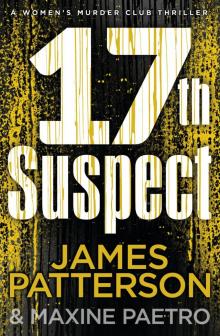 The 17th Suspect
The 17th Suspect The 8th Confession
The 8th Confession 4th of July
4th of July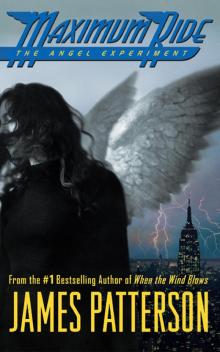 The Angel Experiment
The Angel Experiment Crazy House
Crazy House School's Out - Forever
School's Out - Forever Suzanne's Diary for Nicholas
Suzanne's Diary for Nicholas Cross Justice
Cross Justice Maximum Ride Forever
Maximum Ride Forever The Thomas Berryman Number
The Thomas Berryman Number Honeymoon
Honeymoon The Medical Examiner
The Medical Examiner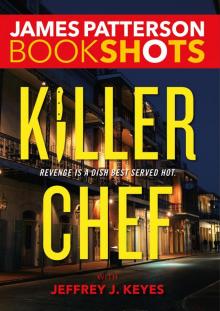 Killer Chef
Killer Chef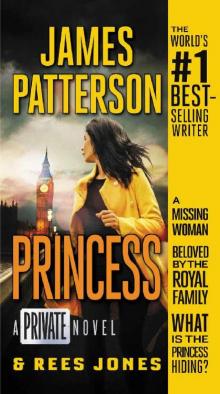 Private Princess
Private Princess Private Games
Private Games Burn
Burn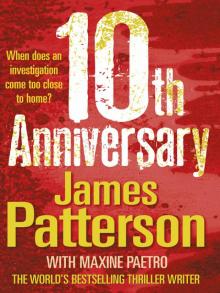 10th Anniversary
10th Anniversary I Totally Funniest: A Middle School Story
I Totally Funniest: A Middle School Story Taking the Titanic
Taking the Titanic The Lawyer Lifeguard
The Lawyer Lifeguard The 6th Target
The 6th Target Cross the Line
Cross the Line Alert
Alert Saving the World and Other Extreme Sports
Saving the World and Other Extreme Sports 1st Case
1st Case Unlucky 13
Unlucky 13 Haunted
Haunted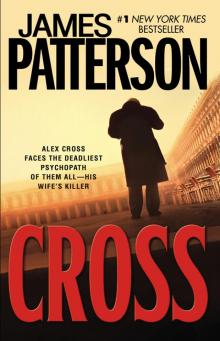 Cross
Cross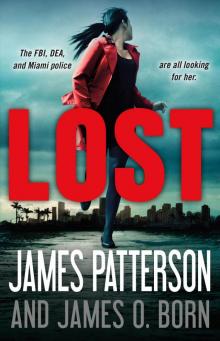 Lost
Lost 11th Hour
11th Hour Bookshots Thriller Omnibus
Bookshots Thriller Omnibus Target: Alex Cross
Target: Alex Cross Hope to Die
Hope to Die The Noise
The Noise Worst Case
Worst Case Dog's Best Friend
Dog's Best Friend Nevermore: The Final Maximum Ride Adventure
Nevermore: The Final Maximum Ride Adventure I Funny: A Middle School Story
I Funny: A Middle School Story NYPD Red
NYPD Red Till Murder Do Us Part
Till Murder Do Us Part Black & Blue
Black & Blue Fang
Fang Liar Liar
Liar Liar The Inn
The Inn Sundays at Tiffany's
Sundays at Tiffany's Middle School: Escape to Australia
Middle School: Escape to Australia Cat and Mouse
Cat and Mouse Instinct
Instinct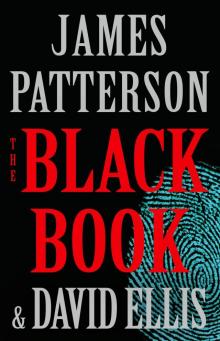 The Black Book
The Black Book London Bridges
London Bridges Toys
Toys The Last Days of John Lennon
The Last Days of John Lennon Roses Are Red
Roses Are Red Witch & Wizard
Witch & Wizard The Dolls
The Dolls The Christmas Wedding
The Christmas Wedding The River Murders
The River Murders The 18th Abduction
The 18th Abduction The 19th Christmas
The 19th Christmas Middle School: How I Got Lost in London
Middle School: How I Got Lost in London Just My Rotten Luck
Just My Rotten Luck Red Alert
Red Alert Walk in My Combat Boots
Walk in My Combat Boots Three Women Disappear
Three Women Disappear 21st Birthday
21st Birthday All-American Adventure
All-American Adventure Becoming Muhammad Ali
Becoming Muhammad Ali The Murder of an Angel
The Murder of an Angel The 13-Minute Murder
The 13-Minute Murder Rebels With a Cause
Rebels With a Cause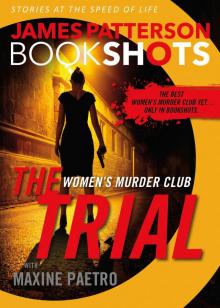 The Trial
The Trial Run for Your Life
Run for Your Life The House Next Door
The House Next Door NYPD Red 2
NYPD Red 2 Ali Cross
Ali Cross The Big Bad Wolf
The Big Bad Wolf Middle School: My Brother Is a Big, Fat Liar
Middle School: My Brother Is a Big, Fat Liar Private Paris
Private Paris Miracle on the 17th Green
Miracle on the 17th Green The People vs. Alex Cross
The People vs. Alex Cross The Beach House
The Beach House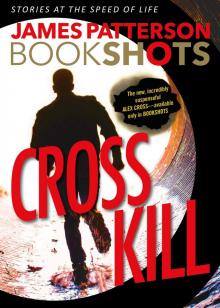 Cross Kill
Cross Kill Dog Diaries
Dog Diaries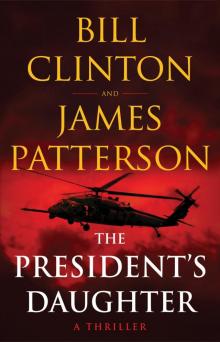 The President's Daughter
The President's Daughter Happy Howlidays
Happy Howlidays Detective Cross
Detective Cross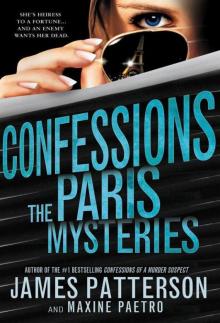 The Paris Mysteries
The Paris Mysteries Watch the Skies
Watch the Skies 113 Minutes
113 Minutes Alex Cross's Trial
Alex Cross's Trial NYPD Red 3
NYPD Red 3 Hush Hush
Hush Hush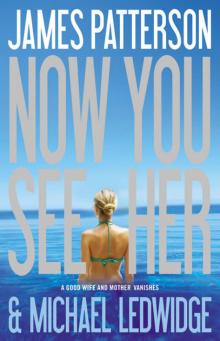 Now You See Her
Now You See Her Merry Christmas, Alex Cross
Merry Christmas, Alex Cross 2nd Chance
2nd Chance Private Royals
Private Royals Two From the Heart
Two From the Heart Max
Max I, Funny
I, Funny Blindside (Michael Bennett)
Blindside (Michael Bennett) Sophia, Princess Among Beasts
Sophia, Princess Among Beasts Armageddon
Armageddon Don't Blink
Don't Blink NYPD Red 6
NYPD Red 6 The First Lady
The First Lady Texas Outlaw
Texas Outlaw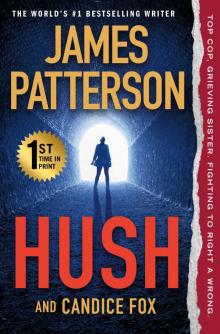 Hush
Hush Beach Road
Beach Road Private Berlin
Private Berlin The Family Lawyer
The Family Lawyer Jack & Jill
Jack & Jill The Midwife Murders
The Midwife Murders Middle School: Rafe's Aussie Adventure
Middle School: Rafe's Aussie Adventure The Murder of King Tut: The Plot to Kill the Child King
The Murder of King Tut: The Plot to Kill the Child King First Love
First Love The Dangerous Days of Daniel X
The Dangerous Days of Daniel X Hawk
Hawk Private Delhi
Private Delhi The 20th Victim
The 20th Victim The Shadow
The Shadow Katt vs. Dogg
Katt vs. Dogg The Palm Beach Murders
The Palm Beach Murders 2 Sisters Detective Agency
2 Sisters Detective Agency Humans, Bow Down
Humans, Bow Down You've Been Warned
You've Been Warned Cradle and All
Cradle and All 20th Victim: (Women’s Murder Club 20) (Women's Murder Club)
20th Victim: (Women’s Murder Club 20) (Women's Murder Club) Season of the Machete
Season of the Machete Woman of God
Woman of God Mary, Mary
Mary, Mary Blindside
Blindside Invisible
Invisible The Chef
The Chef Revenge
Revenge See How They Run
See How They Run Pop Goes the Weasel
Pop Goes the Weasel 15th Affair
15th Affair Middle School: Get Me Out of Here!
Middle School: Get Me Out of Here! Middle School: How I Survived Bullies, Broccoli, and Snake Hill
Middle School: How I Survived Bullies, Broccoli, and Snake Hill From Hero to Zero - Chris Tebbetts
From Hero to Zero - Chris Tebbetts G'day, America
G'day, America Max Einstein Saves the Future
Max Einstein Saves the Future The Cornwalls Are Gone
The Cornwalls Are Gone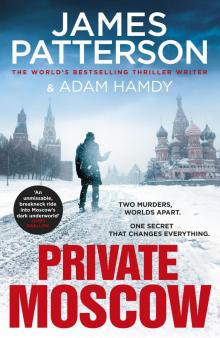 Private Moscow
Private Moscow Two Schools Out - Forever
Two Schools Out - Forever Hollywood 101
Hollywood 101 Deadly Cargo: BookShots
Deadly Cargo: BookShots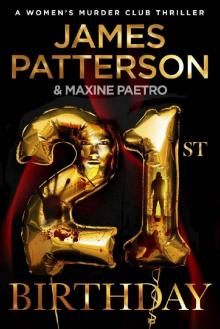 21st Birthday (Women's Murder Club)
21st Birthday (Women's Murder Club) The Sky Is Falling
The Sky Is Falling Cajun Justice
Cajun Justice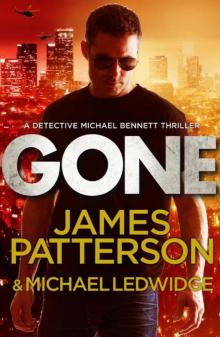 Bennett 06 - Gone
Bennett 06 - Gone The House of Kennedy
The House of Kennedy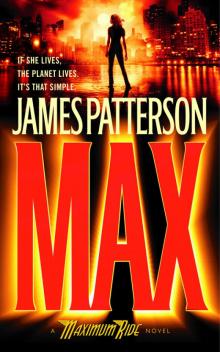 Waterwings
Waterwings Murder is Forever, Volume 2
Murder is Forever, Volume 2 Maximum Ride 02
Maximum Ride 02 Treasure Hunters--The Plunder Down Under
Treasure Hunters--The Plunder Down Under Private Royals: BookShots (A Private Thriller)
Private Royals: BookShots (A Private Thriller) After the End
After the End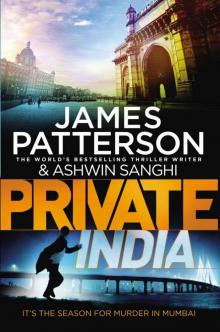 Private India: (Private 8)
Private India: (Private 8)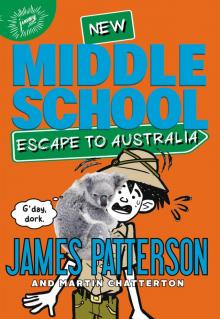 Escape to Australia
Escape to Australia WMC - First to Die
WMC - First to Die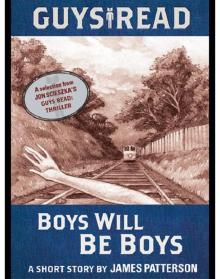 Boys Will Be Boys
Boys Will Be Boys The Red Book
The Red Book 11th hour wmc-11
11th hour wmc-11 Hidden
Hidden You've Been Warned--Again
You've Been Warned--Again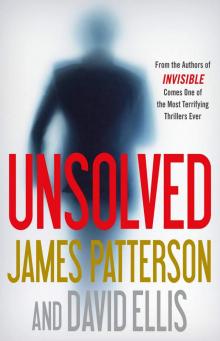 Unsolved
Unsolved Pottymouth and Stoopid
Pottymouth and Stoopid Hope to Die: (Alex Cross 22)
Hope to Die: (Alex Cross 22) The Moores Are Missing
The Moores Are Missing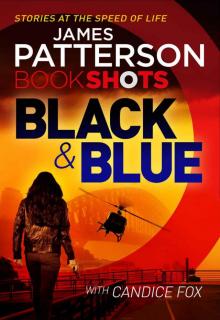 Black & Blue: BookShots (Detective Harriet Blue Series)
Black & Blue: BookShots (Detective Harriet Blue Series) Airport - Code Red: BookShots
Airport - Code Red: BookShots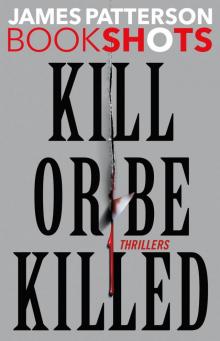 Kill or Be Killed
Kill or Be Killed School's Out--Forever
School's Out--Forever When the Wind Blows
When the Wind Blows Heist: BookShots
Heist: BookShots Murder of Innocence (Murder Is Forever)
Murder of Innocence (Murder Is Forever) Red Alert_An NYPD Red Mystery
Red Alert_An NYPD Red Mystery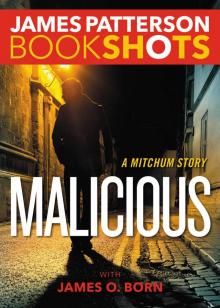 Malicious
Malicious Scott Free
Scott Free The Summer House
The Summer House French Kiss
French Kiss Treasure Hunters
Treasure Hunters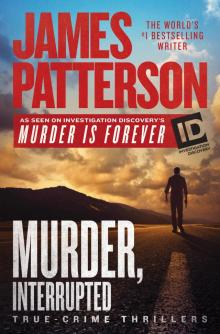 Murder Is Forever, Volume 1
Murder Is Forever, Volume 1 Secret of the Forbidden City
Secret of the Forbidden City Cross the Line: (Alex Cross 24)
Cross the Line: (Alex Cross 24) Witch & Wizard: The Fire
Witch & Wizard: The Fire![Women's Murder Club [06] The 6th Target Read online](http://i1.bookreadfree.com/i/03/24/womens_murder_club_06_the_6th_target_preview.jpg) Women's Murder Club [06] The 6th Target
Women's Murder Club [06] The 6th Target Cross My Heart ac-21
Cross My Heart ac-21 Alex Cross’s Trial ак-15
Alex Cross’s Trial ак-15 Alex Cross 03 - Jack & Jill
Alex Cross 03 - Jack & Jill Liar Liar: (Harriet Blue 3) (Detective Harriet Blue Series)
Liar Liar: (Harriet Blue 3) (Detective Harriet Blue Series) Cross Country ак-14
Cross Country ак-14 Honeymoon h-1
Honeymoon h-1 Maximum Ride: The Angel Experiment
Maximum Ride: The Angel Experiment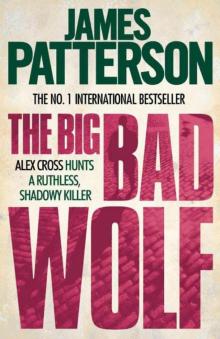 The Big Bad Wolf ак-9
The Big Bad Wolf ак-9 Dead Heat: BookShots (Book Shots)
Dead Heat: BookShots (Book Shots)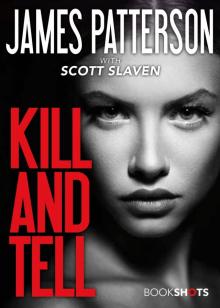 Kill and Tell
Kill and Tell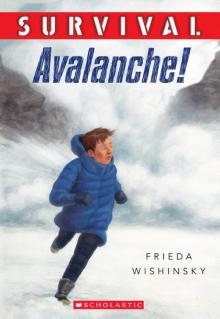 Avalanche
Avalanche Robot Revolution
Robot Revolution Public School Superhero
Public School Superhero 12th of Never
12th of Never Max: A Maximum Ride Novel
Max: A Maximum Ride Novel All-American Murder
All-American Murder Murder Games
Murder Games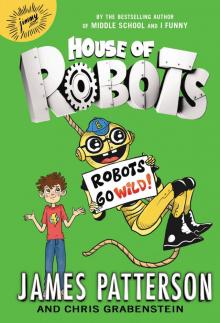 Robots Go Wild!
Robots Go Wild! My Life Is a Joke
My Life Is a Joke Private: Gold
Private: Gold Demons and Druids
Demons and Druids Jacky Ha-Ha
Jacky Ha-Ha Postcard killers
Postcard killers Princess: A Private Novel
Princess: A Private Novel Kill Alex Cross ac-18
Kill Alex Cross ac-18 12th of Never wmc-12
12th of Never wmc-12 The Murder of King Tut
The Murder of King Tut I Totally Funniest
I Totally Funniest Cross Fire ак-17
Cross Fire ак-17 Count to Ten
Count to Ten![Women's Murder Club [10] 10th Anniversary Read online](http://i1.bookreadfree.com/i1/03/30/womens_murder_club_10_10th_anniversary_preview.jpg) Women's Murder Club [10] 10th Anniversary
Women's Murder Club [10] 10th Anniversary![Women's Murder Club [01] 1st to Die Read online](http://i1.bookreadfree.com/i1/03/31/womens_murder_club_01_1st_to_die_preview.jpg) Women's Murder Club [01] 1st to Die
Women's Murder Club [01] 1st to Die I, Michael Bennett mb-5
I, Michael Bennett mb-5 Nooners
Nooners![Women's Murder Club [08] The 8th Confession Read online](http://i1.bookreadfree.com/i1/04/03/womens_murder_club_08_the_8th_confession_preview.jpg) Women's Murder Club [08] The 8th Confession
Women's Murder Club [08] The 8th Confession Private jm-1
Private jm-1 Treasure Hunters: Danger Down the Nile
Treasure Hunters: Danger Down the Nile Worst Case mb-3
Worst Case mb-3 Don’t Blink
Don’t Blink The Games
The Games The Medical Examiner: A Women's Murder Club Story
The Medical Examiner: A Women's Murder Club Story Black Market
Black Market Gone mb-6
Gone mb-6![Women's Murder Club [02] 2nd Chance Read online](http://i1.bookreadfree.com/i1/04/04/womens_murder_club_02_2nd_chance_preview.jpg) Women's Murder Club [02] 2nd Chance
Women's Murder Club [02] 2nd Chance French Twist
French Twist Kenny Wright
Kenny Wright Manhunt: A Michael Bennett Story
Manhunt: A Michael Bennett Story Cross Kill: An Alex Cross Story
Cross Kill: An Alex Cross Story Confessions of a Murder Suspect td-1
Confessions of a Murder Suspect td-1 Second Honeymoon h-2
Second Honeymoon h-2 Chase_A BookShot_A Michael Bennett Story
Chase_A BookShot_A Michael Bennett Story Confessions: The Paris Mysteries
Confessions: The Paris Mysteries![Women's Murder Club [09] The 9th Judgment Read online](http://i1.bookreadfree.com/i2/04/08/womens_murder_club_09_the_9th_judgment_preview.jpg) Women's Murder Club [09] The 9th Judgment
Women's Murder Club [09] The 9th Judgment Absolute Zero
Absolute Zero Nevermore: The Final Maximum Ride Adventure mr-8
Nevermore: The Final Maximum Ride Adventure mr-8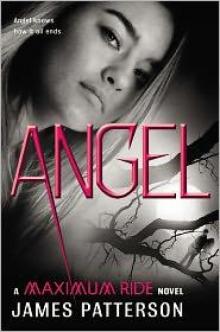 Angel: A Maximum Ride Novel mr-7
Angel: A Maximum Ride Novel mr-7 Juror #3
Juror #3 Million-Dollar Mess Down Under
Million-Dollar Mess Down Under The Verdict: BookShots (A Jon Roscoe Thriller)
The Verdict: BookShots (A Jon Roscoe Thriller)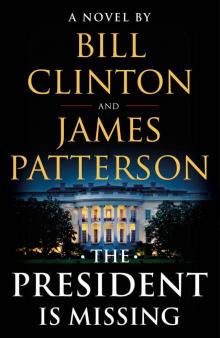 The President Is Missing: A Novel
The President Is Missing: A Novel![Women's Murder Club [04] 4th of July Read online](http://i1.bookreadfree.com/i2/04/06/womens_murder_club_04_4th_of_july_preview.jpg) Women's Murder Club [04] 4th of July
Women's Murder Club [04] 4th of July The Hostage: BookShots (Hotel Series)
The Hostage: BookShots (Hotel Series) $10,000,000 Marriage Proposal
$10,000,000 Marriage Proposal Diary of a Succubus
Diary of a Succubus Unbelievably Boring Bart
Unbelievably Boring Bart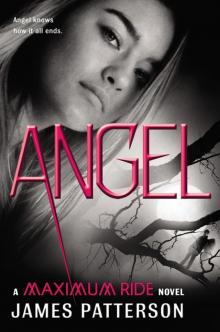 Angel: A Maximum Ride Novel
Angel: A Maximum Ride Novel Stingrays
Stingrays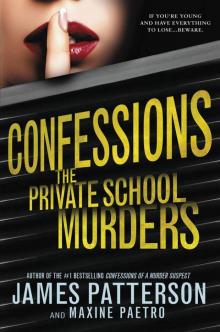 Confessions: The Private School Murders
Confessions: The Private School Murders Stealing Gulfstreams
Stealing Gulfstreams![Women's Murder Club [05] The 5th Horseman Read online](http://i1.bookreadfree.com/i2/04/05/womens_murder_club_05_the_5th_horseman_preview.jpg) Women's Murder Club [05] The 5th Horseman
Women's Murder Club [05] The 5th Horseman Zoo 2
Zoo 2 Jack Morgan 02 - Private London
Jack Morgan 02 - Private London Treasure Hunters--Quest for the City of Gold
Treasure Hunters--Quest for the City of Gold The Christmas Mystery
The Christmas Mystery Murder in Paradise
Murder in Paradise Kidnapped: BookShots (A Jon Roscoe Thriller)
Kidnapped: BookShots (A Jon Roscoe Thriller)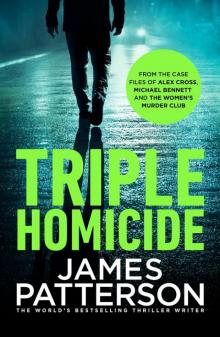 Triple Homicide_Thrillers
Triple Homicide_Thrillers 16th Seduction: (Women’s Murder Club 16) (Women's Murder Club)
16th Seduction: (Women’s Murder Club 16) (Women's Murder Club)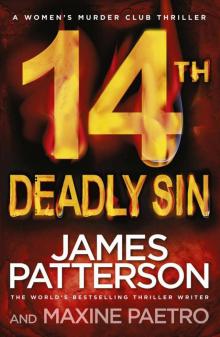 14th Deadly Sin: (Women’s Murder Club 14)
14th Deadly Sin: (Women’s Murder Club 14) Texas Ranger
Texas Ranger Witch & Wizard 04 - The Kiss
Witch & Wizard 04 - The Kiss![Women's Murder Club [03] 3rd Degree Read online](http://i1.bookreadfree.com/i2/04/12/womens_murder_club_03_3rd_degree_preview.jpg) Women's Murder Club [03] 3rd Degree
Women's Murder Club [03] 3rd Degree Break Point: BookShots
Break Point: BookShots Alex Cross 04 - Cat & Mouse
Alex Cross 04 - Cat & Mouse Maximum Ride
Maximum Ride Fifty Fifty: (Harriet Blue 2) (Detective Harriet Blue Series)
Fifty Fifty: (Harriet Blue 2) (Detective Harriet Blue Series) Alex Cross 02 - Kiss the Girls
Alex Cross 02 - Kiss the Girls The President Is Missing
The President Is Missing Hunted
Hunted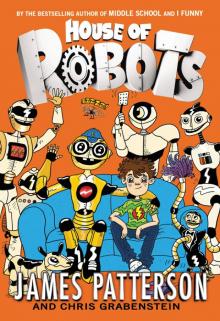 House of Robots
House of Robots Dangerous Days of Daniel X
Dangerous Days of Daniel X Tick Tock mb-4
Tick Tock mb-4 10th Anniversary wmc-10
10th Anniversary wmc-10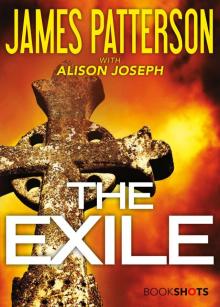 The Exile
The Exile Private Games-Jack Morgan 4 jm-4
Private Games-Jack Morgan 4 jm-4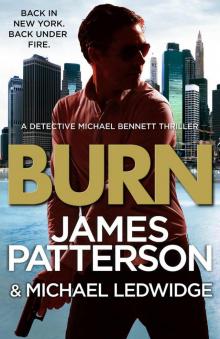 Burn: (Michael Bennett 7)
Burn: (Michael Bennett 7) Laugh Out Loud
Laugh Out Loud The People vs. Alex Cross: (Alex Cross 25)
The People vs. Alex Cross: (Alex Cross 25)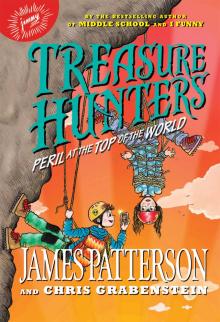 Peril at the Top of the World
Peril at the Top of the World I Funny TV
I Funny TV Merry Christmas, Alex Cross ac-19
Merry Christmas, Alex Cross ac-19 #1 Suspect jm-3
#1 Suspect jm-3 Fang: A Maximum Ride Novel
Fang: A Maximum Ride Novel![Women's Murder Club [07] 7th Heaven Read online](http://i1.bookreadfree.com/i2/04/13/womens_murder_club_07_7th_heaven_preview.jpg) Women's Murder Club [07] 7th Heaven
Women's Murder Club [07] 7th Heaven The End
The End